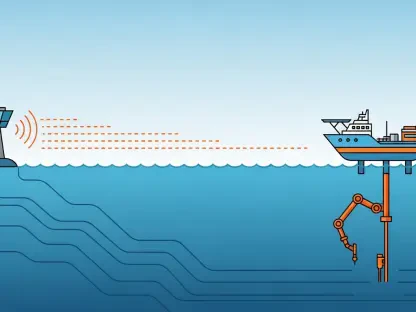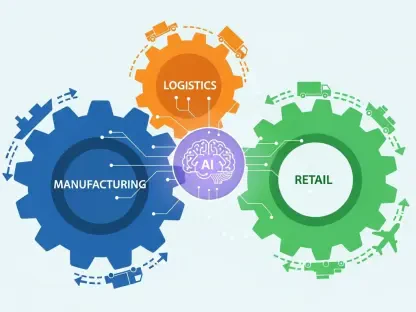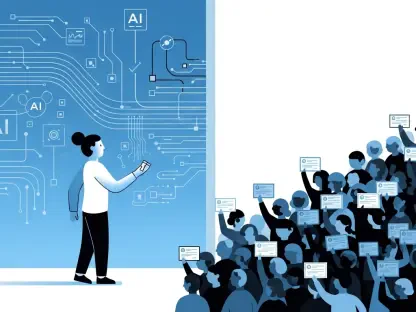What happens when a devastating hurricane strikes, and social media is flooded with hyper-realistic videos of destruction that never occurred, creating chaos in critical moments? In times of crisis, where every decision can mean life or death, AI-generated misinformation poses a lethal threat. These fabricated visuals and false narratives, created with easily accessible tools, can mislead communities, divert emergency resources, and shatter trust in official channels. This growing danger demands urgent attention as technology races ahead of safeguards, leaving responders and the public vulnerable in the chaos of disasters.
The Urgency of the Issue
In an era where information travels at lightning speed, the stakes during emergencies have never been higher. AI-generated content, capable of mimicking reality with chilling accuracy, has emerged as a significant obstacle to effective disaster response. From fake wildfire images spreading panic to fabricated health crisis rumors, this misinformation can derail coordinated efforts and endanger lives. The importance of addressing this issue lies in its direct impact on public safety—when confusion reigns, the ability to save lives diminishes. Understanding and combating this digital deception is not just a tech challenge; it’s a societal imperative to protect communities in their most vulnerable moments.
When Crisis Collides with Deception
During a natural disaster, such as a raging tornado, the public often turns to social platforms for real-time updates. However, the same platforms become breeding grounds for AI-crafted fakes—images or videos so convincing they spark unnecessary evacuations or divert aid from critical areas. A striking example unfolded during a recent wildfire event in British Columbia, where viral fake visuals of entire towns ablaze misled thousands, amplifying fear and straining emergency hotlines. Such incidents reveal how quickly digital lies can escalate a crisis, turning manageable situations into widespread havoc.
The accessibility of generative AI tools has fueled this problem, allowing anyone with minimal skills to create deceptive content in minutes. Unlike traditional misinformation, which might rely on text or crude edits, these advanced fakes exploit human emotions under stress, making them harder to dismiss. Emergency responders, already stretched thin, find themselves battling not just the disaster but also the fallout from these virtual illusions, highlighting a dire need for new strategies to keep pace with technology.
The Ripple Effects on Disaster Management
AI misinformation doesn’t just confuse—it disrupts every layer of emergency response. When false reports of destruction flood communication channels, responders waste critical time chasing phantom crises instead of addressing real ones. This misallocation of resources, such as sending rescue teams to nonexistent disaster zones, can delay aid to those in genuine need, with potentially fatal consequences. Studies indicate that during high-stress events, misinformation spreads 75% faster than verified updates, compounding the operational nightmare for disaster management teams.
Beyond immediate logistics, the long-term damage is equally alarming. Repeated exposure to fake content erodes public trust in official sources, making it harder to disseminate vital safety instructions. Vulnerable populations, often with limited access to reliable information, suffer the most, as seen during the COVID-19 pandemic when false treatment claims led to harmful actions in underserved communities. This unequal impact underscores how AI-driven deception can deepen existing societal divides during crises.
Frontline Perspectives on the Digital Threat
Those on the ground during emergencies offer sobering insights into the AI misinformation challenge. A seasoned disaster coordinator shared, “In the heat of a crisis, people’s judgment falters—AI fakes prey on that weakness with devastating precision.” This vulnerability is not just a layperson’s struggle; even trained professionals find it increasingly difficult to spot fabricated content under time pressure, as research shows that current detection methods lag behind AI’s rapid advancements.
Real-world accounts further illuminate the human element of this issue. During the British Columbia wildfire incident, countless social media users, driven by concern, shared fake images without realizing their falsehood, inadvertently fueling chaos. These stories highlight a dual problem: the sophistication of AI tools and the instinctive trust in emotionally charged content during disasters. Together, they create a perfect storm that emergency teams must navigate alongside physical threats.
Strategies to Counter the AI Deception Wave
Combating AI-generated misinformation demands a multifaceted approach, blending education, technology, and policy. Public media literacy campaigns stand as a cornerstone, equipping individuals with skills to spot fakes by checking sources or noticing digital flaws in content. Starting such initiatives in schools and local hubs can build a foundation of critical thinking, empowering communities to question rather than blindly share during high-stakes moments.
Technology also offers solutions, with fact-checking platforms using AI to swiftly identify fabricated media through metadata analysis and other tools. Meanwhile, authorities must prioritize rapid, clear communication via trusted channels to outpace false narratives, alongside policies requiring clear labeling of AI-generated content on news and social platforms. Legal measures, such as enforcing penalties under frameworks like Canada’s Criminal Code for deliberate disinformation, add a layer of deterrence against malicious actors. Finally, fostering grassroots networks where community leaders share verified updates can reinforce trust and resilience at a local level, ensuring that accurate information prevails.
Reflecting on a Path Forward
Looking back, the havoc wreaked by AI misinformation during past emergencies served as a stark warning of technology’s double-edged nature. The confusion sown by fake visuals and narratives often hindered life-saving efforts, leaving lasting scars on affected communities. Yet, those challenges also illuminated the power of collective action, as responders and citizens alike grappled with distinguishing truth from deception.
Moving ahead, the focus must shift to proactive measures—strengthening digital literacy, investing in detection tools, and enforcing accountability for those who weaponize AI. Governments, tech developers, and local leaders should collaborate to create robust systems that prioritize clarity over chaos. By harnessing education and innovation, society can transform AI from a source of crisis into a shield against it, ensuring that future disasters are met with trust and precision rather than doubt and delay.









